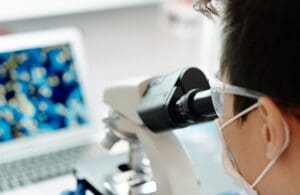
[Photo courtesy of Pexels]
A decade ago, data scientist seemed like the sexiest job of the 21st century, to paraphrase an influential Harvard Business Review article.
In the pharmaceutical industry, data science certainly continues to have tremendous potential, but in years to come, data-savvy biologists could have as least as much of an impact on drug development as data scientists, according to David Harel, co-founder and president of Cytoreason, which has developed a computational disease model for drug developers.
“We call this the biologist of the future,” Harel said, referring to biologists with significant data science training received either in academia or on the job.
The consulting firm Gartner has espoused a similar idea, which it terms a citizen data science to refer to workers outside of statistics and analytics who create data science models based on predictive or prescriptive analytics.
As data science tools grow more sophisticated and easier to use, biologists can take on more active data collection and analysis roles. “They can get most of what they need using data science tools without having data science experts supporting them,” Harel said.
As these trends continue, data scientists will adapt by focusing on higher-order analysis.
“If you think about the dynamic of using data science in pharma, there are always teams of biologists, bioinformaticians or data scientists,” Harel said. “They work together, hand in hand.” However, as biologists become more data-savvy, data scientists active in the field will be forced to move upstream and focus on more sophisticated analyses.
While the so-called democratization of data science could elevate the role of AI in drug development, it could also fuel the demand for data scientists with deep expertise in pharma.
Meanwhile, the demand for entry- and mid-level data scientists may sputter as data-savvy biologists increase in numbers. “As the AI tools get better, they will do most of what skilled [data scientists] people are doing now,” Harel said.
Harel said that the situation bears a resemblance to horse riding at the dawn of the automobile age. “When the car was introduced, a skilled horse rider may have been more efficient than a car driver,” he said. While in traffic-heavy areas today, a horse rider may still be faster, but “nobody cares,” Harel quipped. Cars are “so accessible and simple to operate.”
The growing importance of data science in drug development is simultaneously shifting how pharma companies think about AI. Perhaps a decade ago, some drug companies aimed to get a percentage of their targets from AI/data-driven.
The broader acceptance is leading some drug companies to attempt to integrate data science approaches throughout their organizations. “A company might say, ‘I don’t want targets generated by the computer, but rather, I want a computer to give me an opinion on every target that I’m developing,” Harel said. “Or I want to see what the data says about every program.”